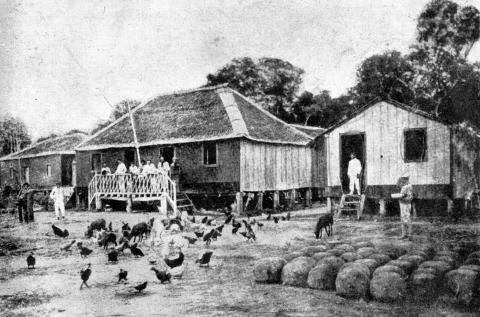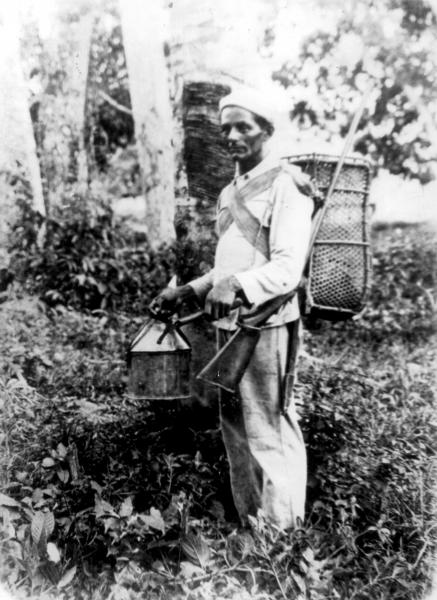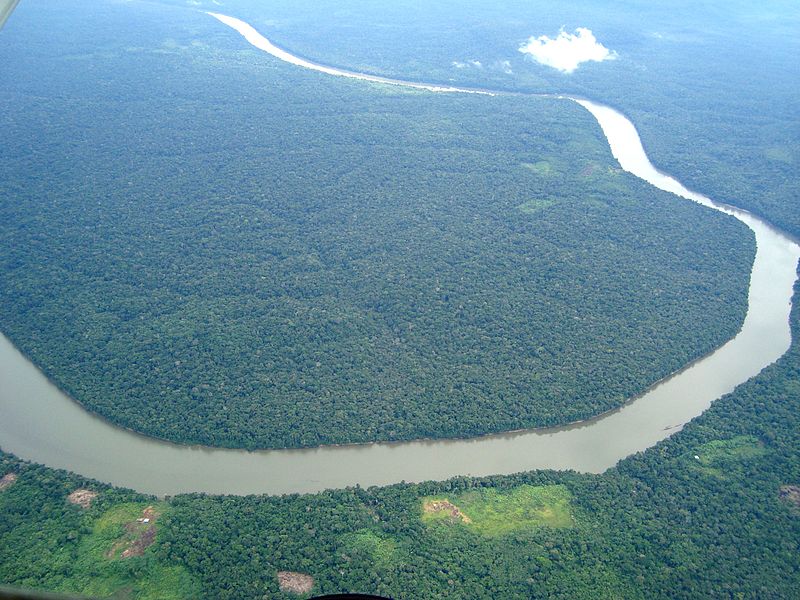During World War II, the governments of Brazil and the United States made an unprecedented level of joint investment in the economy and infrastructure of the Amazon region. The dictatorship of Getúlio Vargas (1937-45) trumpeted the colonization and development of the Amazon (christened the “March to the West”) as a nationalist imperative to defend a sparsely settled frontier covering some sixty percent of Brazilian territory.
Guest Seth Garfield shows how a little-known chapter of World War II history illuminates the ways outsiders’ very understandings and representations of the nature of the Amazon have evolved over the course of the latter half of the twentieth century.
Guests
 Seth GarfieldProfessor in the Department of History at the University of Texas at Austin
Seth GarfieldProfessor in the Department of History at the University of Texas at Austin
Hosts
 Joan NeubergerProfessor of History, University of Texas at Austin
Joan NeubergerProfessor of History, University of Texas at Austin
Let’s start with a question that may surprise people: why was the rubber industry in the remote Amazon interesting to people in the United States during World War II?
At the time of World War II, the United States was a have-not nation when it came to rubber. It depended on imports, predominantly from Southeast Asia (over 98% of its rubber came from this region). There was no synthetic rubber industry in the United States. When the Japanese invaded the Malayan Peninsula and the Netherland East Indies, the United States lost access to 92% of its rubber supplies. This generated a major crisis in the United States, and they began to look for alternatives. Because of the Amazon’s large number of rubber trees, that was seen as a good source.
So, there’s a war going on in the world, but this was also a special period in Brazilian history. Can you tell us a little about the Estado Novo and what people hoped for that?
The Estado Novo was the dictatorship led by Getulio Vargas. Vargas came to power in 1930, and in 1937 he seized dictatorial control over the country. It was a very nationalistic time in Brazil and Vargas was committed to not only economic nationalism, but also frontier developments. So he upheld the Amazon as the future of the nation, as a source of natural resources, as a frontier to be settled and conquered by Brazilians—
—Let me interrupt you for a second. What do you mean by economic nationalism?
In Latin America in the 1930s many governments embraced a form of economic development, Import Substitution Industrialization, because their economies had been so unsettled by the Great Depression. They looked to producing domestically the industrial goods they had imported prior to the crisis. And for the automobile sector and for the military in Brazil the Amazon’s resources were very important.

So what was Vargas trying to do in the Amazon? What were his goals?
It was a very ambitious project. He wanted to promote and subsidize migration because one of the problems that policy makers traditionally claimed bedeviled the Amazon was the lack of an abundant workforce. So it was subsidizing migration and it was also sanitizing the region. It was a region that was plagued by numerous epidemics and public health problems. There was an attempt to use public health and sanitation projects to make the region more salubrious. There was also an attempt to grow blight-free rubber trees in the Amazon to compete the Asian rubber trees, which were grown on plantations.
There was a big project to move people in to the region, but there were people living there already, right?
Correct.
So, what did they do with them?
Well that’s a really interesting question. The people in the Amazon, the Amazonian native population, which was comprised of predominantly non-indigenous groups (although there was a large indigenous population as well), were disparaged by government officials as being lazy, as not being ambitious or industrious enough to affect the transformation of the region. So it’s not that there was a lack of workers in the region, technically, there was a lack of willing workers to carry out the type of regimented labor that the government officials and bosses were looking for. So they looked to populations from outside the region, particularly the Northeast of Brazil, who were celebrated as more industrious, more ambitious, and could bring about the transformation of the region.
So from the government’s point of view, this was seen as a positive project, a modernizing project, right? But that was controversial, wasn’t it?
Well it was seen as a very nationalistic project. What I argue in the book is that Vargas was not the first one to cast the Amazon as an El Dorado, or a future or region brimming with promise, but he certainly was intent upon dispelling the idea of the Amazon as a green hell, as a region without a future, as a region condemned to backwardness. Part of his political project was very much raising support, consciousness, and pride in the Amazon among the rest of the Brazilian population, the majority of which lives outside the Amazon region.
And were they successful?
Well, I argue in a sense they were. The Amazon, I think, today in Brazil is seen, by those outside the region, in complex ways. There is a sense of pride in the Amazon’s bounty, in the size of the region and its potential and its future, which I argue was generated in part (this type of cultural pride) by and under the Vargas regime. Although there still remain those, in the more developed region, that see it as the dangerous, the snake-infested, malaria ridden region that they would never visit if you paid them to go.

OK, back to World War II. How did the US hunger for rubber affect national economic policies there?
Where? In the United States?
In Brazil. The US really needed a new source of rubber. How did that influence what was going on there?
Well, in general Brazil was a key wartime ally of the United States. In 1942 it actually, August 1942, Vargas declared war on Germany and Italy. Brazil is the only Latin American country to send troops to fight in World War II. In general, Brazil was the darling of US economic and military aid during the war, and it fares quite well in terms of its agro-economic performance. The Amazon in particular is also the beneficiary of millions of dollars in US government aid and technology transfers. In 2000, it would be the equivalent of over $110 million that were invested by the government. This is, for a huge region, not a tremendous amount of money—although a significant amount, given that it was a traditionally very poor region and chronically lacking in capitol and technology.
So what happens after the war then? Because the developed rubber industry during the war created new conditions for afterwards, what happens afterwards?
Yeah, that’s an interesting question. I argue that (the US develops synthetic rubber during the war) the geopolitical importance that had driven US policy makers to the Amazon in sort of a frenzied pursuit of raw, or natural, rubber is no longer as important. It’s almost as if the Amazon lacks the urgency for US officials, and they do withdraw the support, economic and technological that had been offered, but the Brazilian government retains the subsidies that rubber growers had received during the war and this whole nationalistic project that Vargas had developed is certainly sustained so that the Amazon is under the Brazilian Constitution of 1946 is earmarked to receive a certain percentage of national revenues. And this developmental project, and regional planning, is sustained for the course of the post-war period
When does it become, or does it become, a region where the rainforest is seen as something to be protected rather than exploited?
I see that as taking place in the 1970’s and 80’s and onward. There is a significant amount of deforestation that takes place in the post war period, some 12% by the 1980’s—somewhat higher at this point. So there is a real change that’s taking place in the region. But also, aside from the physical change and the acceleration of deforestation, there’s the emergence of the environmental movement throughout the world, initially in the north Atlantic countries, but by the 1980’s in Brazil as well. This brings about a new valorization, a new importance I think for the Amazon as a source of biodiversity, as a buffer against global warming. As a result, the image of the Amazon changes somewhat. It’s not that there’s still not a developmentalist impulse—many projects to transform the Amazon and extract its resources for economic development and corporate enrichment—but there is a competing, or countervailing project, which obviously has made the eco-politics in the region quite contentious.

You did research all over Brazil for this book, including in some really remote places. Can you talk a little bit about some of the places where you went to do research? And were there snakes in the archives?
[laughs] Sure. Well, much to my surprise I found that the archives in the Amazon were a mixed bag. Some were poorly organized, as might be expected in a region that’s poor or poorer than the more developed regions in Brazil. But in the city of Porto Velho, which is the capital of the state of Rondônia, I did research at a judicial archive, and it was one of the best-organized archives I’d ever seen in my life!
How big is the town?
I think it was about 400,000. They had wonderful archivists. Everything was on the database. I was able to find the material very quickly. So that was a very wonderful experience, and I found some excellent material there about the use of the courts by the rubber tappers and the use of the new labor legislation that had been enacted during the war that they brought to defend themselves against their bosses.
Personally, I think one of the most interesting experiences was when I visited the extracting reserve where Chico Mendez, the great labor leader and environmentalist who was assassinated in 1988, carried out his struggles against one of the ranches in the Amazon. There I was able to tap rubber myself. I was quite bad at it!
So you learned how hard it is!
I learned how hard it is. It was also amazing to me, in speaking with residents, to see how much they new about the flora in the Amazon and how the different uses they were able to apply to the different flora. It was really eye opening.